Outlet CDs
4858 products
-
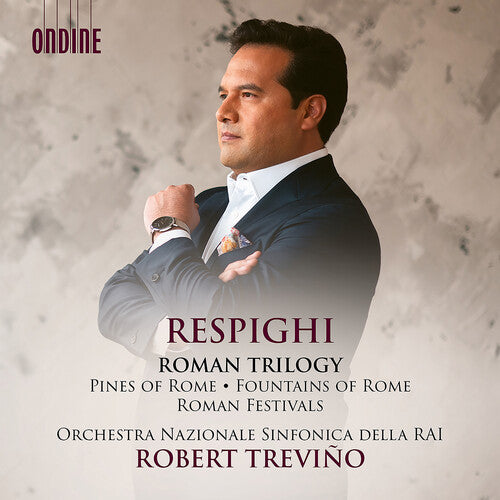
-
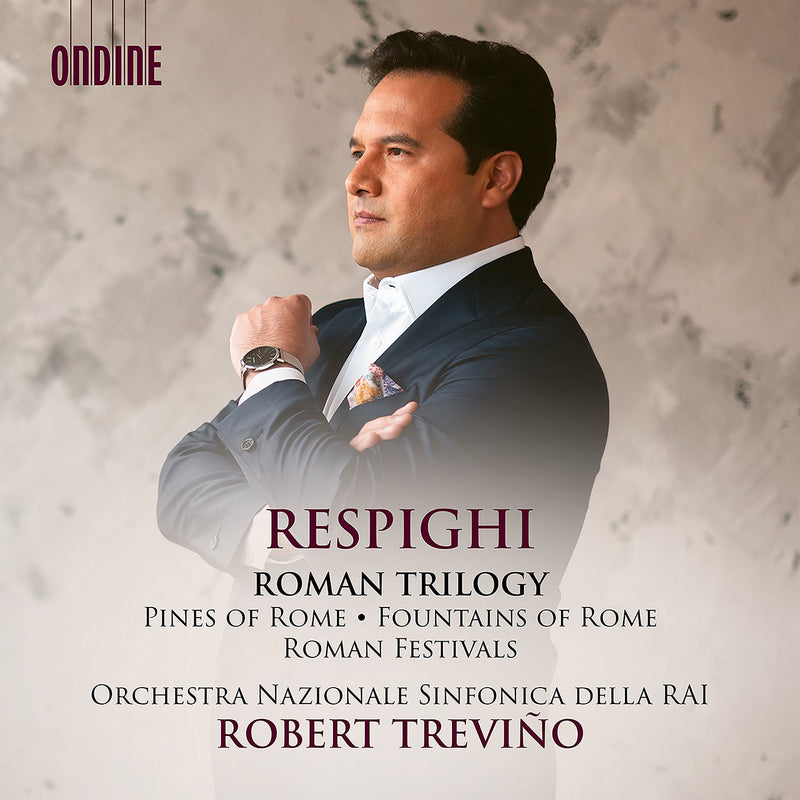
-
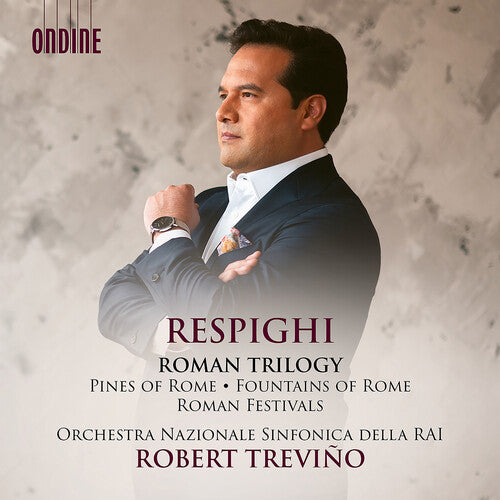 {# optional: put hover video/second image here positioned absolute; inset:0 #}
On SaleOndine
{# optional: put hover video/second image here positioned absolute; inset:0 #}
On SaleOndineRespighi: Roman Trilogy / Treviño, RAI National Symphony Orchestra
After recordings of Beethoven’s complete symphonies; two Ravel albums; one Rautavaara album; and the award-winning album ‘Americascapes’; Robert Treviño now turns his...
September 15, 2023$18.99$9.49 -
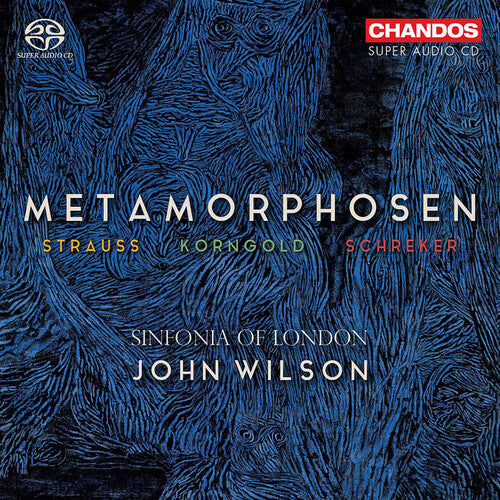
-
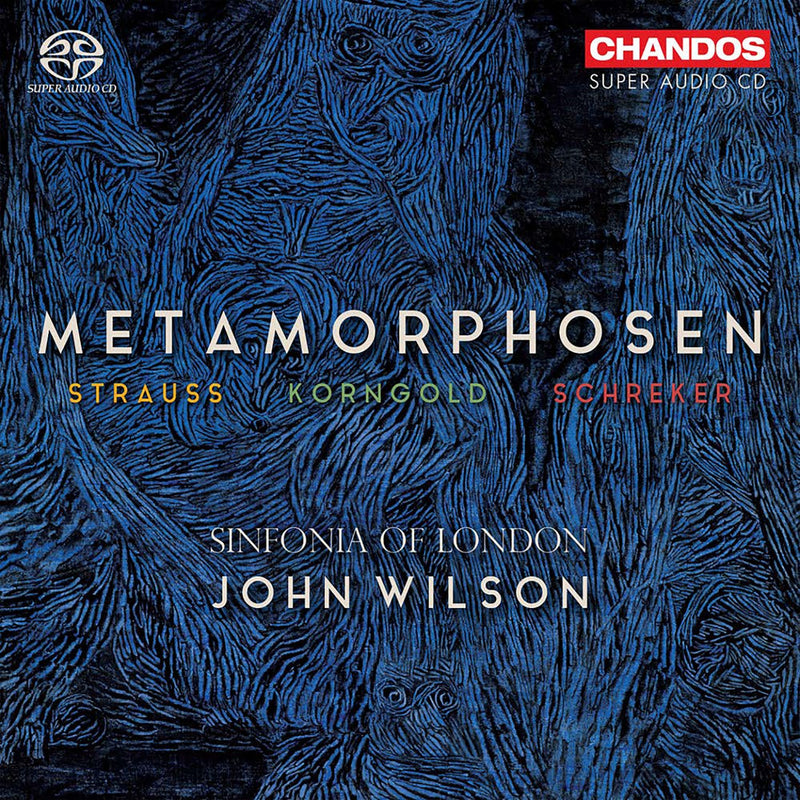
-
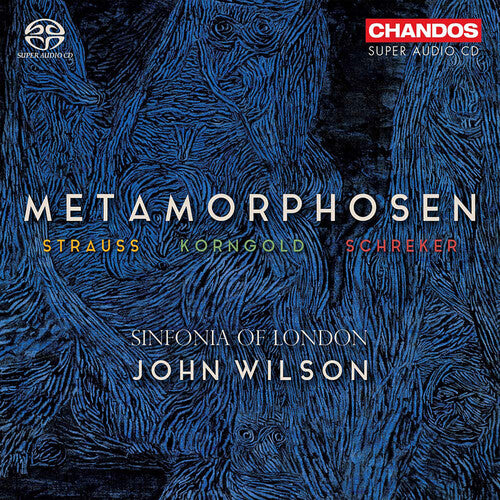 {# optional: put hover video/second image here positioned absolute; inset:0 #}
On SaleChandos
{# optional: put hover video/second image here positioned absolute; inset:0 #}
On SaleChandosStrauss, Korngold & Schreker: Metamorphosen / Wilson, Sinfonia of London
One of the New York Times' 5 Classical Albums to Hear Now Shortlisted for the Gramophone Awards Perhaps nobody since John Barbirolli...
April 01, 2022$21.99$10.99 -
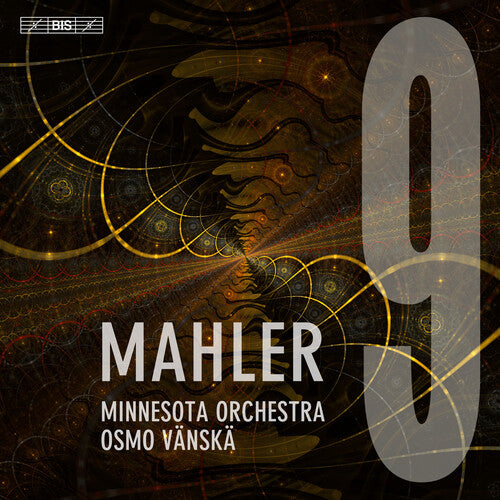
-
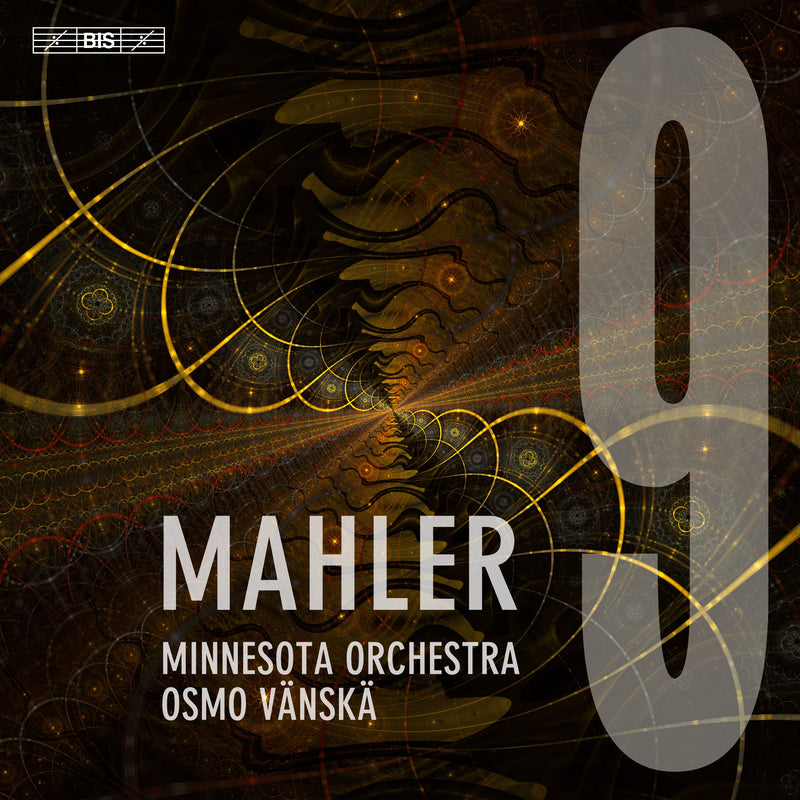
-
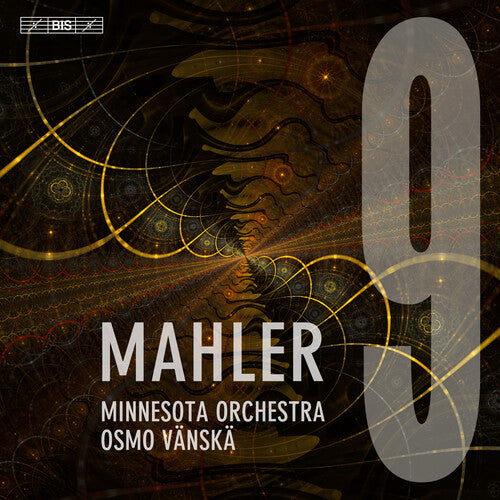 {# optional: put hover video/second image here positioned absolute; inset:0 #}
On SaleBIS
{# optional: put hover video/second image here positioned absolute; inset:0 #}
On SaleBISMahler: Symphony No. 9 / Vänskä, Minnesota Orchestra
For the latest instalment in their Mahler series, the Minnesota Orchestra under the direction of Osmo Vänskä presents what many consider to...
April 07, 2023$21.99$10.99 -
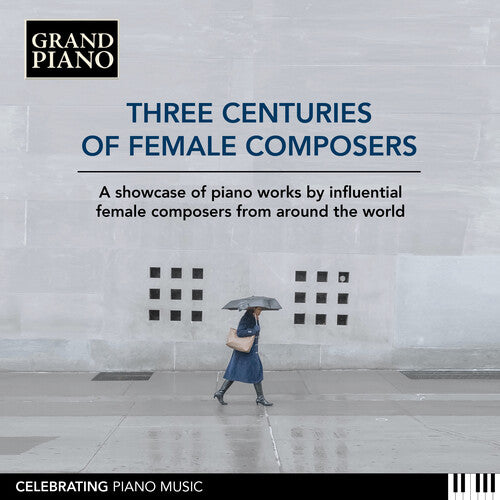
-
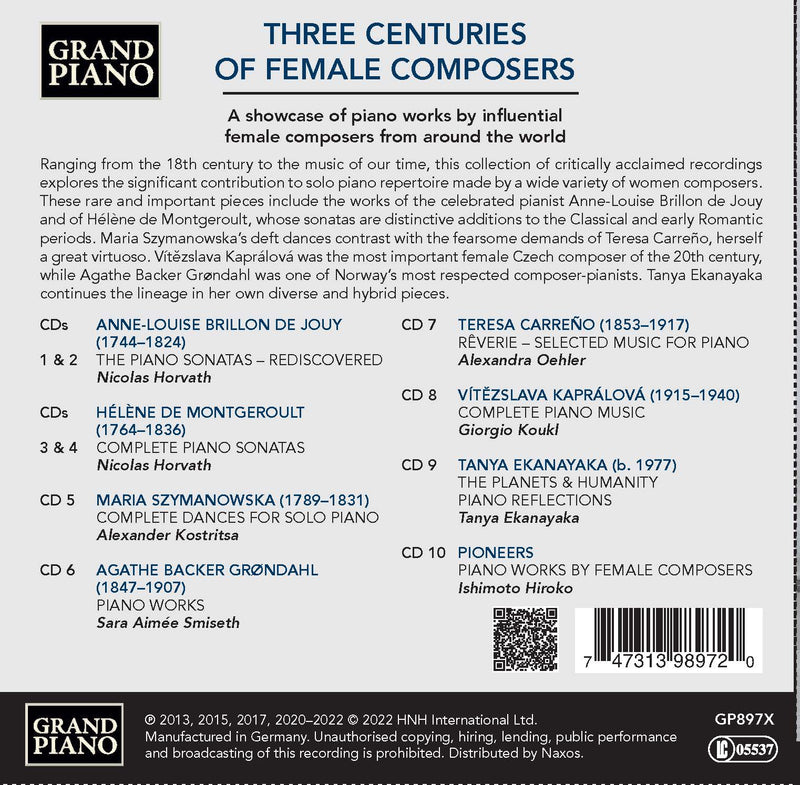
-
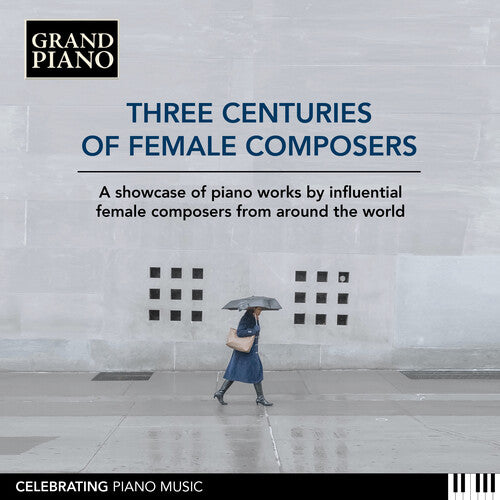 {# optional: put hover video/second image here positioned absolute; inset:0 #}
On SaleGrand Piano
{# optional: put hover video/second image here positioned absolute; inset:0 #}
On SaleGrand PianoThree Centuries of Female Composers
Ranging from the 18th century to the music of our time, this collection of critically acclaimed recordings explores the significant contribution to...
March 04, 2022$69.99$34.98 -
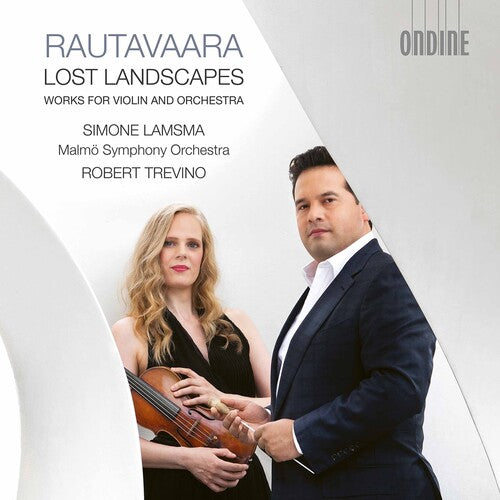
-
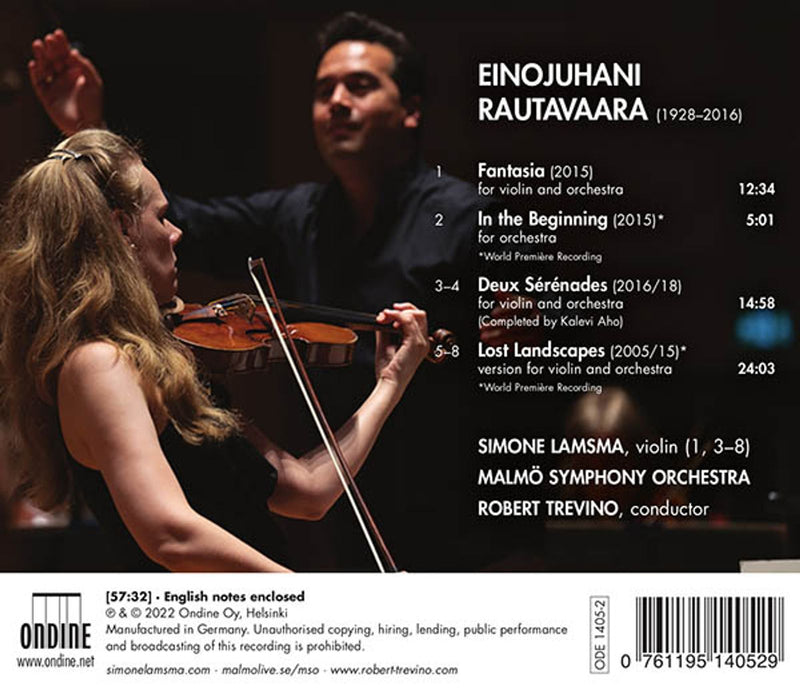
-
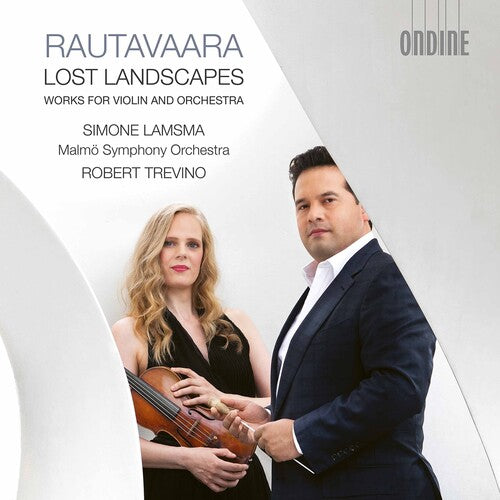 {# optional: put hover video/second image here positioned absolute; inset:0 #}
On SaleOndine
{# optional: put hover video/second image here positioned absolute; inset:0 #}
On SaleOndineRautavaara: Lost Landscapes / Lamsma, Trevino, Malmö Symphony Orchestra
Conductor Robert Trevino’s fourth album release on Ondine is focused on the late works of composer Einojuhani Rautavaara (1928–2016), one of Finland’s...
April 01, 2022$18.99$9.49 -

-

-
 {# optional: put hover video/second image here positioned absolute; inset:0 #}
On SaleSono Luminus
{# optional: put hover video/second image here positioned absolute; inset:0 #}
On SaleSono LuminusAtmosphériques, Vol. 1 / Bjarnason, Iceland Symphony
Note: this double-disc release contains both a CD and a Blu-ray Audio disc. The former will play on any CD player, and...
April 28, 2023$22.99$11.49 -
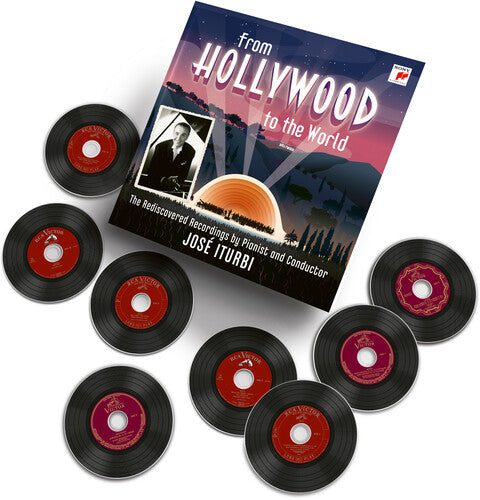
-
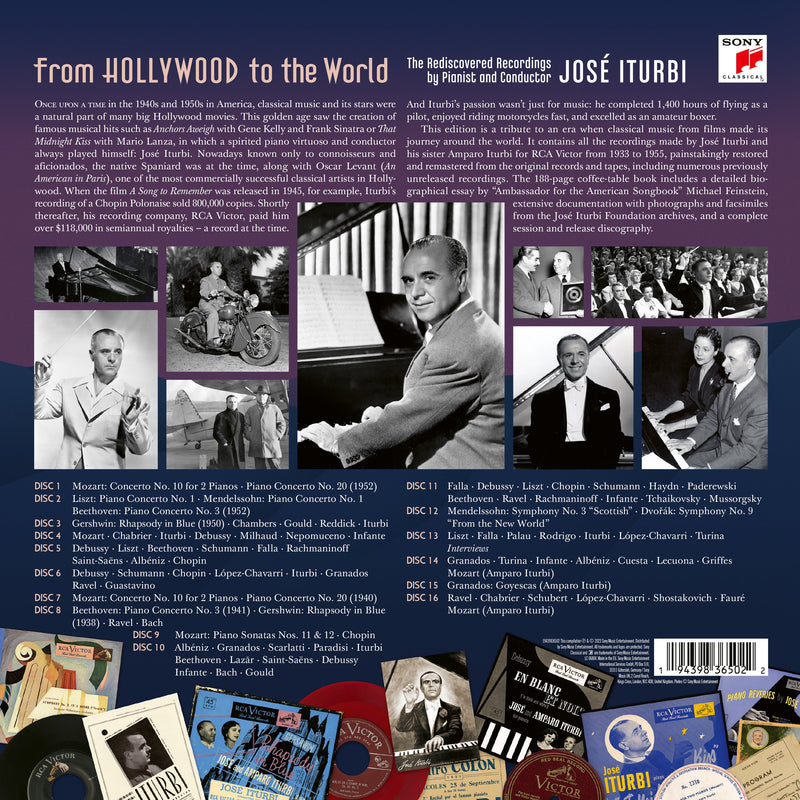
- Mozart: Concerto for 2 Pianos and Orchestra No. 10 in E flat, K365
- Mozart: Piano Concerto No. 20 in D minor, K466
- Liszt: Piano Concerto No. 1 in E flat major, S124
- Mendelssohn: Piano Concerto No. 1 in G minor, Op. 25
- Beethoven: Piano Concerto No. 3 in C minor, Op. 37
- Gershwin: Rhapsody in Blue
- Chambers, J C: All American
- Gould, M: Symphonette No. 4 'Latin-American'
- Reddick: Espanharlem
- Iturbi: Soliloquy
- Mozart: Sonata for 2 pianos in D major, K448
- Chabrier: Trois Valses Romantiques
- Iturbi: Spanish Dance
- Debussy: En blanc et noir
- Milhaud: Scaramouche, suite for two pianos, Op. 165b
- Nepomuceno: La siesta
- Infante: Guadalquivir
- Infante: Sevillana
- Debussy: Suite bergamasque: Clair de lune
- Liszt: Liebestraum, S541 No. 3 (Nocturne in A flat major)
- Debussy: Rêverie
- Beethoven: Für Elise (Bagatelle in A minor, WoO59)
- Schumann: Arabeske in C major, Op. 18
- Debussy: Deux arabesques, L. 66
- Falla: Dance of Terror (from El amor brujo)
- Rachmaninoff: Prelude Op. 3 No. 2 in C sharp minor
- Liszt: Les jeux d'eaux à la Villa d'Este, S. 163 No. 4)
- Falla: Ritual Fire Dance (from El amor brujo)
- Saint-Saëns: Allegro appassionato, Op. 70
- Albéniz: Malagueña (No. 3 from Espana, Op. 165)
- Chopin: Étude Op. 10 No. 12 in C minor ‘Revolutionary'
- Chopin: Polonaise No. 6 in A flat major, Op. 53 'Héroïque'
- Debussy: Estampe No. 3 - Jardins sous la pluie
- Schumann: Romance in F sharp major, Op. 28 No. 2
- Chopin: Prelude Op. 28 No. 9 in E major
- Chopin: Prelude Op. 28 No. 10 in C sharp minor
- Chopin: Prelude Op. 28 No. 15 in D flat major ‘Raindrop'
- Chopin: Nocturne No. 9 in B major, Op. 32 No. 1
- López-Chavarri: El viejo castillo moro
- Iturbi: Cancion de cuna
- Granados: Orientale (No. 2 from 12 Danzas españolas)
- Chopin: Mazurka No. 6 in A minor, Op. 7 No. 2
- Chopin: Mazurka No. 7 in F minor, Op. 7 No. 3
- Chopin: Mazurka No. 24 in C major, Op. 33 No. 3
- Chopin: Mazurka No. 27 in E minor, Op. 41 No. 2
- Chopin: Mazurka No. 25 in B minor, Op. 33 No. 4
- Chopin: Scherzo No. 2 in B flat minor, Op. 31
- Debussy: Children's Corner
- Ravel: Jeux d'eau
- Guastavino: Gato
- Mozart: Concerto for 2 Pianos and Orchestra No. 10 in E flat, K365
- Mozart: Piano Concerto No. 20 in D minor, K466
- Beethoven: Piano Concerto No. 3 in C minor, Op. 37
- Gershwin: Rhapsody in Blue
- Ravel: Pavane pour une infante défunte
- Bach, J S: Passacaglia in C minor, BWV582
- Mozart: Piano Sonata No. 11 in A major, K331 'Alla Turca'
- Mozart: Piano Sonata No. 12 in F major, K332
- Chopin: Impromptu No. 4 in C sharp minor, Op. 66 'Fantaisie-Impromptu'
- Chopin: Waltz No. 6 in D flat major, Op. 64 No. 1 'Minute Waltz'
- Chopin: Waltz No. 7 in C sharp minor, Op. 64 No. 2
- Chopin: Mazurka No. 5 in B flat major, Op. 7 No. 1
- Albéniz: Sevilla (from Suite Española, Op. 47)
- Granados: Goyescas: Quejas ó La Maja y el Ruiseñor
- Scarlatti, D: Keyboard Sonata K27 in B minor
- Scarlatti, D: Keyboard Sonata K159 in C major 'La caccia'
- Paradies: Toccata in A
- Iturbi: Pequena danza espanola
- Beethoven: Andante Favori in F, WoO 57
- Albéniz: Cantos de España (5), Op. 232, No. 4
- Lazăr, F: Piano Sonata No. 2 in F Minor, Op. 15: III Tempo di Marcia funebre
- Saint-Saëns: Caprice arabe, Op. 96
- Debussy: L'isle joyeuse
- Infante: Danze andaluse (for 2 pianos): No. 2 Sentimento
- Debussy: Deux arabesques, L. 66
- Bach, J S: Fantasia in C minor, BWV906
- Granados: Danza española, Op. 37 No. 10 'Melancólica'
- Gould, M: Boogie Woogie Etude
- Gould, M: Blues
- Falla: Ritual Fire Dance (from El amor brujo)
- Falla: Dance of Terror (from El amor brujo)
- Debussy: Suite bergamasque: Clair de lune
- Liszt: Liebestraum, S541 No. 3 (Nocturne in A flat major)
- Chopin: Polonaise No. 6 in A flat major, Op. 53 'Héroïque'
- Schumann: Arabeske in C major, Op. 18
- Debussy: Rêverie
- Haydn: Theme and Variations in C major, Hob.XVII:5
- Paderewski: Minuet in G major, Op. 14 No. 1
- Beethoven: Für Elise (Bagatelle in A minor, WoO59)
- Schumann: Träumerei (from Kinderszenen, Op. 15)
- Ravel: Pavane pour une infante défunte
- Rachmaninoff: Humoresque in G major, Op. 10 No. 5
- Infante: Danses andalouses
- Tchaikovsky: The Seasons, Op. 37b: June (Barcarolle)
- Tchaikovsky: The Seasons, Op. 37b: November (Troika)
- Mussorgsky: Une Larme (A Tear)
- Mendelssohn: Symphony No. 3 in A minor, Op. 56 'Scottish'
- Dvořák: Symphony No. 9 in E minor, Op. 95 'From the New World'
- Liszt: Hungarian Rhapsody, S244 No. 14 in F minor
- Falla: El sombrero de tres picos: Dance of the Neighbours (Seguidillas)
- Falla: El sombrero de tres picos: Danza del molinero (farruca)
- Falla: El sombrero de tres picos: Final Dance (Jota)
- Palau Boix: Marche burlesque
- Palau Boix: Hommage a Debussy
- Iturbi: Seguidillas
- Cuesta: Danza valenciana in A major
- Falla: Siete Canciones populares españolas
- Turina: Homenaje a Lope de Vega, Op. 90: I. Cuando tan hermosa os miro
- Granados: Danza española, Op. 37 No. 8 'Sardana'
- Granados: Danza española, Op. 37 No. 12 'Arabesca'
- Granados: Danza española, Op. 37 No. 9 'Romántica'
- Turina: Mujeres Españolas, Series 1, Op. 17: 2. La andaluza sentimental
- Turina: Mujeres Españolas, Series 1, Op. 17: 3. La morena coqueta
- Infante: Pochades andalouses: Canto flamenco
- Infante: ochades andalouses: Danse gitane
- Infante: Pochades andalouses: Aniers sur la route de Seville
- Infante: Pochades andalouses: Tientos
- Albéniz: Granada (from Suite española No. 1, Op. 47)
- Albéniz: Córdoba (No. 4 from Cantos de España, Op. 232)
- Cuesta: Danza valenciana in G major
- Lecuona: Malagueña
- Griffes: The White Peacock
- Infante: Guadalquivir
- Infante: Pochades andalouses: Ritmo
- Mozart: Sonata for 2 pianos in D major, K448: Allegro molto
- Granados: El Pelele
- Granados: Goyescas (piano suite)
- Ravel: Valses nobles et sentimentales
- Chabrier: Scherzo-valse (No. 10 from Pièces pittoresques)
- Chabrier: Idylle (No. 6 from Pièces pittoresques)
- Chabrier: Bourrée Fantasque
- Schubert: Valses Sentimentales, D 779 Op. 50 (Excerpts)
- Schubert: 12 Valses Nobles, D 969 Op. 77: selection
- López-Chavarri: Danza de las labradoras Valencianas
- Shostakovich: Prelude for piano, Op. 34 No. 2 in A minor
- Shostakovich: Prelude for piano, Op. 34 No. 14 in E flat minor
- Shostakovich: Prelude for piano, Op. 34 No. 24 in D minor
- Fauré: Impromptu No. 3 in A flat major Op. 34
- Mozart: Piano Sonata No. 13 in B flat major, K333
-
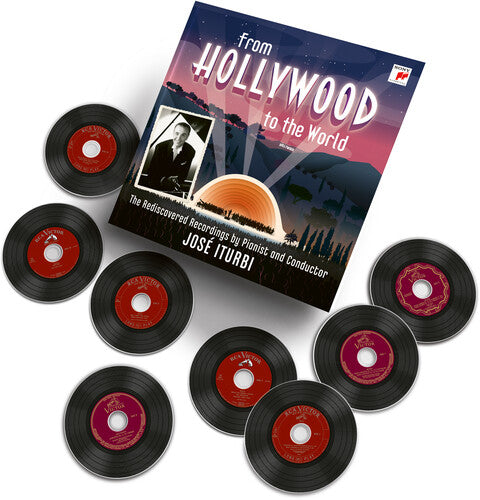 {# optional: put hover video/second image here positioned absolute; inset:0 #}
On SaleSony Masterworks
{# optional: put hover video/second image here positioned absolute; inset:0 #}
On SaleSony MasterworksThe Rediscovered RCA Victor Recordings / José Iturbi
This collection stands as a valuable time capsule from which one comes away with a fuller understanding of Iturbi’s prominence in American...
March 03, 2023$125.98$62.96 -
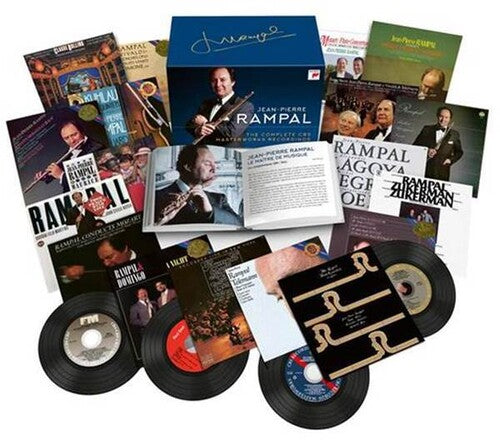 {# optional: put hover video/second image here positioned absolute; inset:0 #}
On SaleSony Masterworks
{# optional: put hover video/second image here positioned absolute; inset:0 #}
On SaleSony MasterworksJean-Pierre Rampal – The Complete CBS Masterworks Recordings
Before Jean-Pierre Rampal appeared on the music scene in the 1950s, wind players were rarely hired as soloists with orchestras. This legendary...
December 03, 2021$199.98$99.94 -

-

-
 {# optional: put hover video/second image here positioned absolute; inset:0 #}
On SaleBrilliant Classics
{# optional: put hover video/second image here positioned absolute; inset:0 #}
On SaleBrilliant ClassicsByrd: My Ladye Nevells Booke / Pieter-Jan Belder
The only complete available recording of a landmark in Elizabethan keyboard music. With a huge catalogue of Brilliant Classics recordings to his...
July 28, 2023$18.99$9.49 -

-

-
 {# optional: put hover video/second image here positioned absolute; inset:0 #}
On SaleSony Masterworks
{# optional: put hover video/second image here positioned absolute; inset:0 #}
On SaleSony MasterworksDavid Zinman Conducts Strauss / Zinman, Tonhalle-Orchester Zürich
David Zinman, one of today’s most versatile and enterprising conductors, renowned for his interpretations of Beethoven and the music of his American...
December 04, 2020$24.98$12.48 -
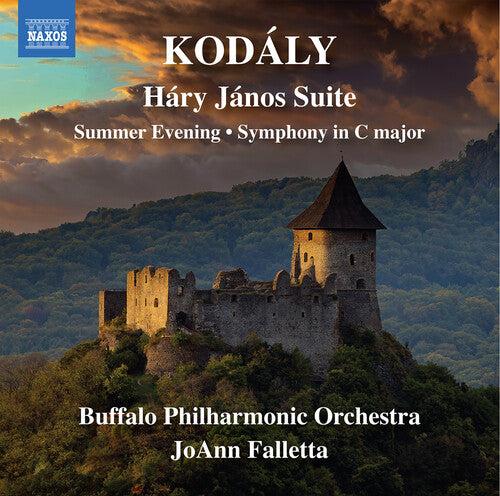
-
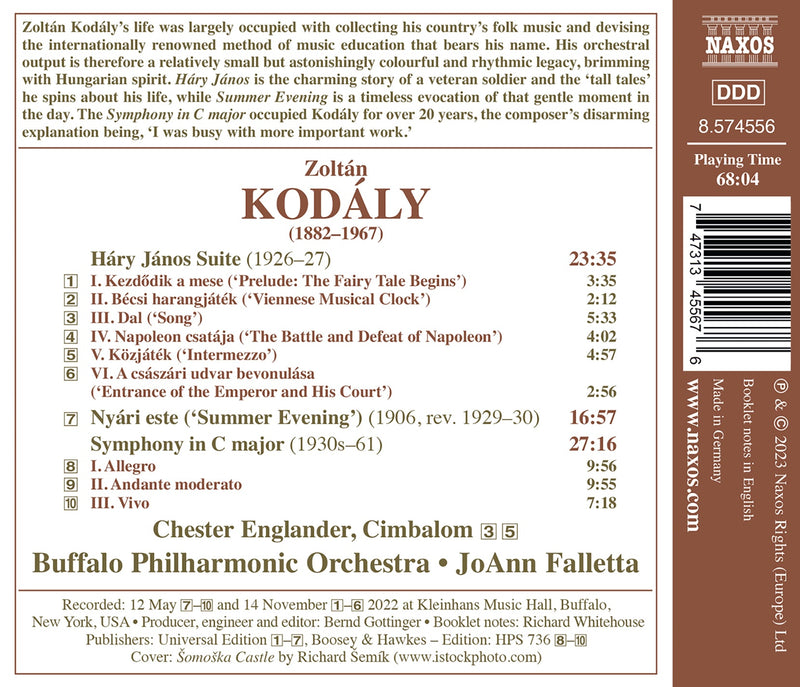
-
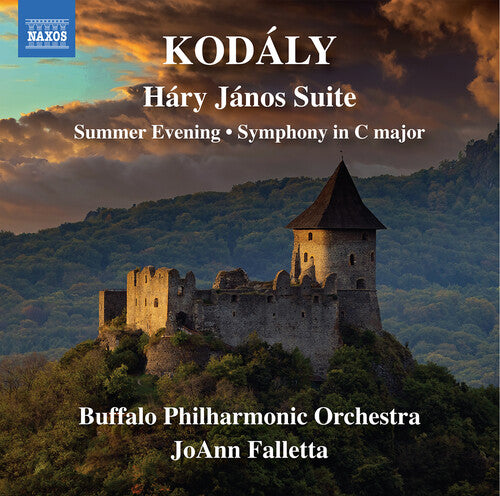 {# optional: put hover video/second image here positioned absolute; inset:0 #}
On SaleNaxos
{# optional: put hover video/second image here positioned absolute; inset:0 #}
On SaleNaxosKodály: Háry János Suite; Symphony in C / Falletta, Buffalo Philharmonic
Zoltán Kodály’s orchestral output is relatively small but brimming with Hungarian spirit. JoAnn Falletta and the Buffalo Philharmonic (BPO) present one of...
October 27, 2023$19.99$9.99 -

-

-
![The Naxos Music Group 2023 Catalogue [Book + Sampler CD]](//arkivmusic.com/cdn/shop/files/highlights.jpg?v=1766245467&width=800) {# optional: put hover video/second image here positioned absolute; inset:0 #}
On SaleNaxos
{# optional: put hover video/second image here positioned absolute; inset:0 #}
On SaleNaxosThe Naxos Music Group 2023 Catalogue [Book + Sampler CD]
Naxos was founded in 1987 and has developed from being known primarily as a budget label focusing on standard repertoire into a...
July 01, 2023$14.99$7.49 -

-

-
 {# optional: put hover video/second image here positioned absolute; inset:0 #}
On SaleSono Luminus
{# optional: put hover video/second image here positioned absolute; inset:0 #}
On SaleSono LuminusMarrow - The Bach Cello Suites / Thorsteinsdóttir
There is an Icelandic saying, “mergur málsins”, which directly translates to “the marrow of the matter,” and these Suites, to me, speak...
June 23, 2023$19.99$9.99 -
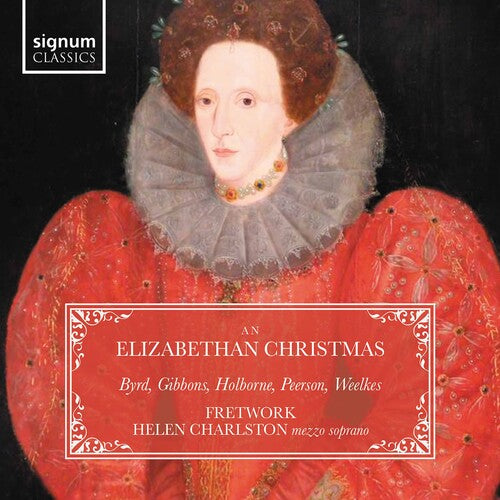
-
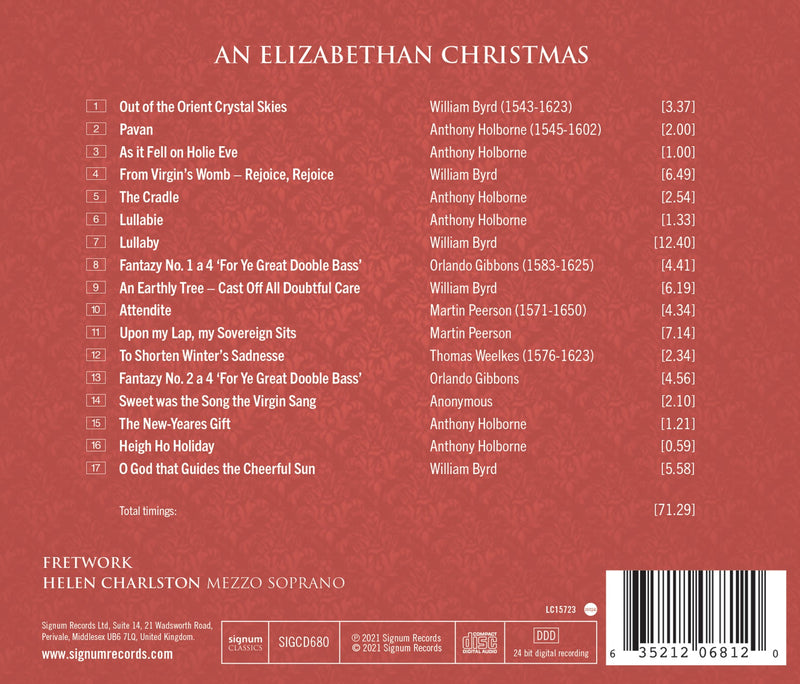
-
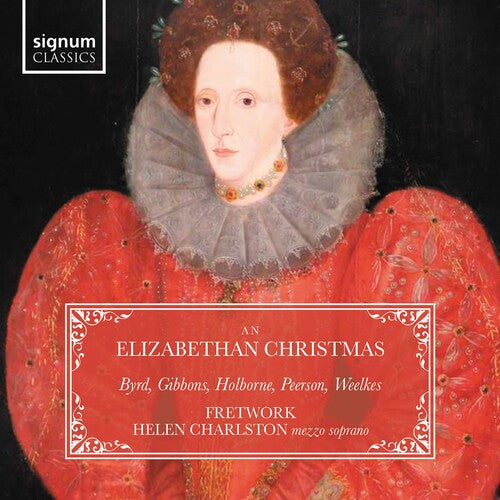 {# optional: put hover video/second image here positioned absolute; inset:0 #}
On SaleSignum Classics
{# optional: put hover video/second image here positioned absolute; inset:0 #}
On SaleSignum ClassicsAn Elizabethan Christmas / Fretwork
Viol consort Fretwork and mezzo soprano Helen Charlston explore the more reflective and sombre Christmas celebrations of Elizabethan England, in a collection...
September 03, 2021$19.99$9.99 -
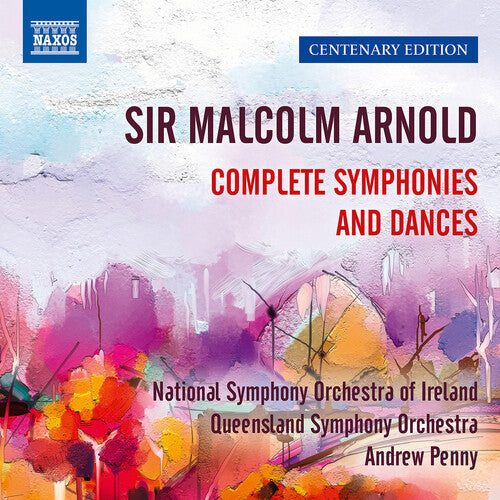
-
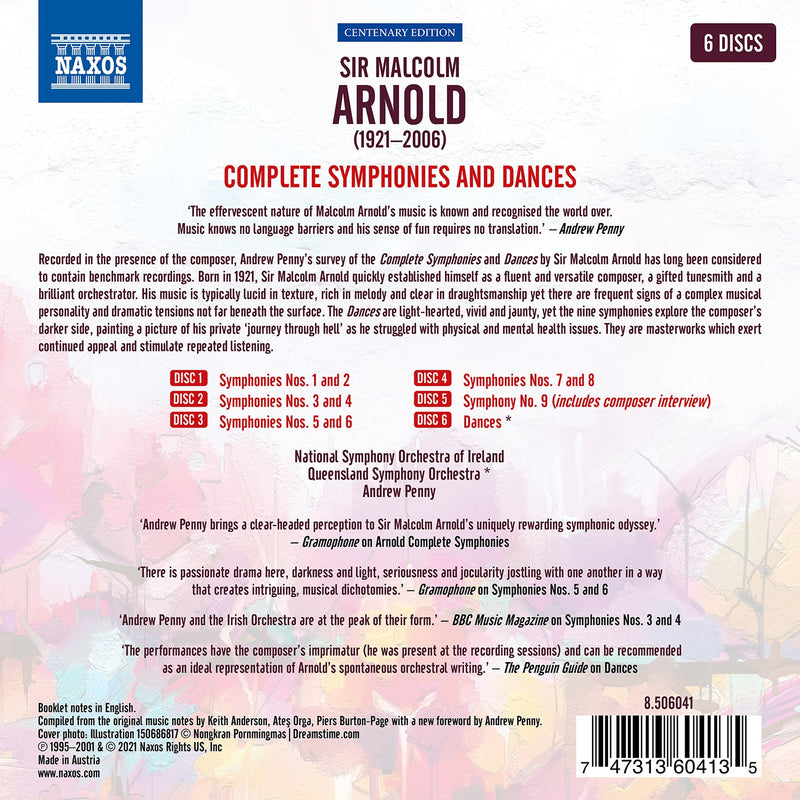
-
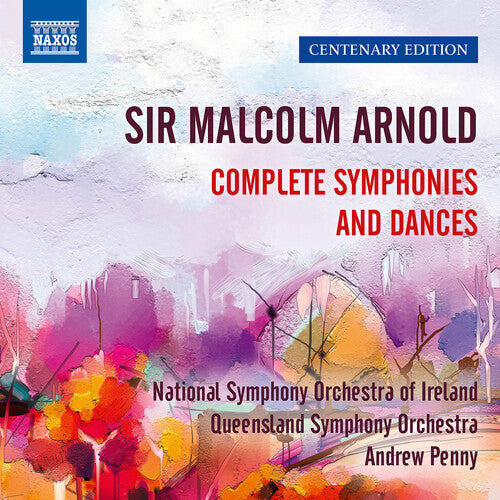 {# optional: put hover video/second image here positioned absolute; inset:0 #}
On SaleNaxos
{# optional: put hover video/second image here positioned absolute; inset:0 #}
On SaleNaxosArnold: Complete Symphonies & Dances / Andrew Penny
Recorded in the presence of the composer, Andrew Penny’s survey of the Complete Symphonies and Dances by Sir Malcolm Arnold has long...
October 22, 2021$51.99$25.98
Respighi: Roman Trilogy / Treviño, RAI National Symphony Orchestra
After recordings of Beethoven’s complete symphonies; two Ravel albums; one Rautavaara album; and the award-winning album ‘Americascapes’; Robert Treviño now turns his focus on the symphonic poems by Ottorino Respighi (1879–1936).Together with the Orchestra Nazionale Sinfonica della RAI; Robert Treviño presents the composer’s famous Roman Trilogy; an exciting orchestral masterpiece culminating in the triumphant Pines of Rome.
Respighi's fascination with the Eternal City is nowhere better expressed than in the three symphonic poems that make up the so-called Roman Trilogy. He had rarely taken on works of such proportions and his most recent large-scale orchestral work, the Sinfonia Drammatica, dating from 1914, still reveals the lasting influence of Brahms and Franck. But just one year later, he finally shook off the shackles of late 19th-century Romanticism, and offered a first glimpse of the remarkable use of color that would soon become a hallmark of his orchestral writing.
REVIEW:
Respighi’s three tone poems, collectively known as the “Roman Trilogy,” have been popular since their premieres, and there is no shortage of recordings. However, here is one that is worth consideration from a rising conductor and a major orchestra that is not recorded as often as it ought to be. This is absolutely infectious fun, and the performances are fully in the spirit of these evergreen favorites. Here is a release that will make one remember what it was they loved about this music in the first place.
-- AllMusic,com (James Manheim)
Strauss, Korngold & Schreker: Metamorphosen / Wilson, Sinfonia of London
One of the New York Times' 5 Classical Albums to Hear Now
Shortlisted for the Gramophone Awards
Perhaps nobody since John Barbirolli has been able to make strings sing like the brilliantly talented John Wilson.
Following their critically acclaimed album of English Music for Strings, Sinfonia of London and John Wilson turn to Germany and three outstanding works for string orchestra. Franz Schreker’s Intermezzo, the oldest piece here, was composed in 1900, before Schreker’s rise to fame in the opera houses of Germany and Austria, but shows strong indications of what was to follow. Korngold composed the Symphonische Serenade following his return to Vienna from Hollywood after the Second World War, and shortly before he wrote his Symphony in F sharp. Korngold effortlessly conjures a vivid range of colors and textures from his large forces (32 violins, 12 violas, 12 cellos, and 8 basses) in a work that explores the virtuosity of the players to the full. Composed in 1945, as a reaction to the horrors of the war, and the desecration of German culture, Richard Strauss’s Metamorphosen for 23 solo strings seems to look backwards to the German Romantic tradition (a trait even more evident in his Four Last Songs, of 1948). The moving final passage, marked ‘In Memoriam’, leaves the listener to contemplate in silence.
"Wilson’s release wins hands down. Part of the victory is due to the conductor and string players’ panache…whatever the mood, the Sinfonia’s tone stays full-blooded and refulgent, just like Chandos’s recording." -Times of London
REVIEW:
What a fine and stimulating recording this is. Perhaps nobody since John Barbirolli has been able to make strings sing like the brilliantly talented John Wilson. Franz Schreker’s “Intermezzo” here has a sheen to it that is intensely delicate one minute and impossibly sumptuous the next. Strauss’s “Metamorphosen” has rarely had such an agonizingly drawn out, lovingly burnished performance as this. Even better is the rarity that accompanies it: Korngold’s Symphonic Serenade, a disfigured, difficult recollection of all that poignantly easygoing light music in the Austrian tradition, written when he returned to Vienna from Hollywood. The hush that Wilson finds for its slow movement is indescribably haunting.
-- The New York Times
Mahler: Symphony No. 9 / Vänskä, Minnesota Orchestra
For the latest instalment in their Mahler series, the Minnesota Orchestra under the direction of Osmo Vänskä presents what many consider to be the pinnacle of the Austrian composer’s entire work, the Ninth Symphony, his last completed symphony. After a vast and emotionally intense first movement that shows an astonishing fluidity of form, theme, texture and tonality, ‘the most glorious thing Mahler has written’ according to Alban Berg, the second movement brings joy and playfulness and seems to evoke both an urban Straussian world and folk music cultures. To the bitter irony and anger of the third movement the last movement, a mystical Adagio, seems to respond with ineffable tenderness. Often regarded as the composer’s monumental – both in terms of scale and emotional scope – leave-taking of the world, the Ninth Symphony can also be understood as a requiem for his daughter who died a few years before, an acknowledgment of the transience of life, a memorial to Vienna, an evocation of fading Austrian and Bohemian landscapes, a homage to a vanishing European cultural world.
Three Centuries of Female Composers
Ranging from the 18th century to the music of our time, this collection of critically acclaimed recordings explores the significant contribution to solo piano repertoire made by a wide variety of women composers. These rare and important pieces include the works of the celebrated pianist Anne-Louise Brillon de Jouy and of Hélène de Montgeroult, whose sonatas are distinctive additions to the Classical and early Romantic periods. Maria Szymanowska’s deft dances contrast with the fearsome demands of Teresa Carreño, herself a great virtuoso. Vítězslava Kaprálová was the most important female Czech composer of the 20th century, while Agathe Backer Grøndahl was one of Norway’s most respected composer-pianists. Tanya Ekanayaka continues the lineage in her own diverse and hybrid pieces.
Volumes included:
Carreño: Rêverie & Selected Music for Piano
Szymanowska: Complete Dances for Solo Piano
Kaprálová: Complete Piano Music
Pioneers: Piano Works by Female Composers
Brillon de Jouy: The Piano Sonatas Rediscovered
Ekanayaka: The Planets & Humanity - Piano ReflectionsMontgeroult: Complete Piano Sonatas
Backer Grøndahl: Piano Works
REVIEWS:
French pianist Nicolas Horvath reveals more of the music of Hélène de Montgeroult, the pianist, composer, and teacher whose background influence on such seminal figures as Chopin and Schumann – and quite possibly Brahms – is only now being acknowledged. Horvath makes appealingly light work of her nine keyboard sonatas, several recorded for the first time.
-- BBC Music Magazine
Nicolas Horvath clearly enjoys de Jouy’s work, and delivers readings which are spirited and lyrical, playful and reflective, easing into the minor mode (in which most of the sonatas were composed) as though at the daybreak of Romanticism. In this particular recording, I was struck by the clarity of sound, which made it easier to hear the evenness and responsiveness of Horvath’s touch.
-- Fanfare
Venezuelan pianist-composer Teresa Carreño had a dramatic, colorful career that is hard to believe. Of the works presented in this fascinating recording, all but one are world premieres. This music has a gentle melancholy. Several of these miniatures have Chopinesque harmonies and perfumes. The album ends on an upbeat note, the composer’s Opus 1, a highly accomplished waltz full of scintillating episodes written for Gottschalk. The latter must have been knocked out by this charmer.
Alexandra Oehler plays with sensitive phrasing and skillful voicing. Her refined musical sensibility is just right for this repertory. The recording, like the music, is warm and inviting.
-- American Record Guide
Rautavaara: Lost Landscapes / Lamsma, Trevino, Malmö Symphony Orchestra
Conductor Robert Trevino’s fourth album release on Ondine is focused on the late works of composer Einojuhani Rautavaara (1928–2016), one of Finland’s most celebrated composers after Sibelius and known worldwide for his Neo-Romantic, even mystic compositions. Together with violinist Simone Lamsma and the Malmö Symphony Orchestra the artists are presenting four final orchestral works by the celebrated composer.
Two of the works are world première recordings. In his late period, Rautavaara received several communications from the world’s leading violinists requesting him to write works for them. He was able to oblige them, creating several extensive works featuring solo violin. Fantasia (2015) for violin and orchestra is a work of soft Neo-Romantic harmonies and soaring melodic lines. In 2014, Rautavaara was asked to write a new Violin Concerto. This commission resulted in Deux Sérénades for violin and orchestra which remained unfinished at Rautavaara’s death: the second movement was sketched out, but only its beginning was orchestrated. Kalevi Aho, an accomplished composer of symphonies and concertos who studied composition with Rautavaara at the turn of the 1970s, fleshed out the orchestration in 2018. Lost Landscapes (2005/15) was originally written as a violin sonata, but Rautavaara began orchestrating the work in 2013. The first movement was premiered at the contemporary music festival at Tanglewood in July 2015, but the full premiere of the work took place in Malmö in March 2021, with Simone Lamsma as soloist. In the Beginning (2015) is a concise overture-type work commissioned for a concert opener. The titles of his works were important for the composer, forming part of the ‘aura’ of the work and often even constituting the initial impulse for writing the piece in the first place.
REVIEWS:
There is a transcendent intensity to Rautavaara’s music which is heightened by this writing for strings. All of the music here is relatively recent, the earliest from 2005, but here rearranged for these forces. Lost Landscapes, Fantasia, In the Beginning and Deux Serenades (completed by Kalevi Aho, after the composer’s death) are the four works here. Music to be immersed in and a fitting presentation of some of Rautavaara’s last work.
-- Lark Reviews
All these violin concertante works are attractive, but they are also all rather similar, and there is a preponderance of slow music. So they are best not listened to all at the same time. In the Beginning is different: it shows another side of the composer and perhaps has the best music on the disc.
We have a cosmopolitan team here. The soloist, Simone Lamsma is Dutch, has performed widely and already made a number of recordings. Robert Trevino is American and is a rising star. The Malmö Symphony Orchestra is one of Sweden’s leading orchestras. They all provide assured performances. The recording is sympathetic and the booklet informative. The Fantasia and Deux Sérénades have each been recorded by their commissioners but coupled with different composers, so the Rautavaara fan will find this the most convenient way to collect these works.
-- MusicWeb International
Atmosphériques, Vol. 1 / Bjarnason, Iceland Symphony
Note: this double-disc release contains both a CD and a Blu-ray Audio disc. The former will play on any CD player, and the latter will only play on devices with Blu-ray read capability.
Daniel Bjarnason writes: "at the risk of getting canceled by my musician colleagues, I’m going to divulge a dark truth about classical music: it’s never as captivating or molecule-altering for anyone as it is for us on stage. Which is why I often find classical records, especially those of the orchestral persuasion, so underwhelming. So not … immediate. Which is why I am approaching zealot status in my admiration for Sono Luminus and the way in which it submerges listeners within reach of the Atlantis that is the on-stage experience. Which is why, save for live performance, the often inimitable new-music originating in, or in proximity to, Iceland (homeland to an unreasonable percentage of the composers living rent-free in my headphones for more than a decade) has found its most ardent advocate and most clarion amplifier in Winchester, Virginia. Certainly its exceptional national orchestra has. Despite a bewildering insistence by journalists to characterize music written by those with Icelandic surnames as a monolith, the entries on this tracklist are as singular as hand blown glass.
"The inclusion of American sonic clairvoyant Missy Mazzoli is a helpful geographic foil here, but there is one element fusing all of these inventions: Your person is about to feel minuscule or massive, by contrast to – or motivated by – these sounds. Anna Thorvaldsdottir’s music is often intimidatingly cyclopean, and Catamorphosis at times mimics the cosmic indifference of Lovecraftian deities, but it simultaneously introduces an iridescent hope I have not encountered before in her music. Mazzoli’s Sinfonia (for Orbiting Spheres) catapults us from one end of a pulsing solar system to the other while Daníel Bjarnason’s From Space I Saw Earth improbably stretches perspective from earth to the moon and back, seeming somehow both terrestrial and paranormal within a single phrase. Maria Huld Markan Sigfúsdóttir's Clockworking bridges a similar expanse, coexisting within the measurable realm of time-keeping … and the immeasurable realm of what occurs as the seconds tick by. Is Bára Gísladóttir's ÓS gasping in air, or desperately exhaling? Whatever your observation, and as with every waypoint on this illusory itinerary, the answer is likely: both."
REVIEWS:
The range of sonorities they [the Iceland Symphony Orchestra] bring out in Gísladóttir’s ÓS is viscerally gripping – rushing strings, apocalyptically deep wind notes and percussion fusillades…Mazzoli’s engaging Sinfonia and Sigfúsdóttir’s Clockworking provide textural, stylistic and expressive contrast. Sono Luminus’s sound is top-notch. Enjoy!
-- Gramophone
I listened to these two discs one after another: the first is a normal CD, which I listened to to familiarize myself with this music. This is all definitely in my wheelhouse: Anna Thorvaldsdottir’s CATAMORPHOSIS, from 2020; Missy Mazzoli’s Sinfonia (for Orbiting Spheres), from 2014; Daníel Bjarnason’s From Space I Saw Earth, from 2019; Maria Sigfúsdóttir’s Clockworking for Orchestra, from 2020; and Bára Gísladóttir’s ÓS, written for the Iceland Centenary in 2018. It’s beautifully played by the Iceland Symphony Orchestra, directed by Daniel Bjarnason.
Only a few months ago I reviewed Missy Mazzoli’s latest album, Dark With Excessive Bright, which also includes her Sinfonia (for Orbiting Spheres), with Tim Weiss conducting the Arctic Philharmonic. It seems like high-latitude orchestras are best situated to play this piece about the Music of the Spheres, situated as they are far from the noise of the world’s cities, and closer to the light show of the Aurora Borealis. I prefer the performance of the Iceland players by the narrowest of margins in this important work, helped as it is by the sound engineering of Sono Luminus.
And it’s the audio that brings us to the second disc: a Pure Audio Blu-ray disc with the identical repertoire, totalling just under an hour, in remarkable Surround Sound. As I’ve mentioned a few times in my reviews, I don’t spend a lot of time worrying about the audiophile component of recording, but listening to this Blu-ray knocked me for a loop. This will surely become a demonstration disc for high-end Surround Sound systems.
Iceland is a small country, but its music, both classical and popular, has the huge scope and universal appeal of the Sagas. This is a distinguished addition to a long and distinguished artistic tradition.
-- Music for Several Instruments
Boasting a formidable ensemble of ninety full-time musicians, Iceland's national orchestra is the perfect conduit for these composers's bold imaginings. Atmospheriques is an apt title given how much its oft-ethereal material imposes itself. Melody is downplayed in favour of mood, texture, and presence, the latter qualities architecturally established in the form of grandiose blocks of sound. The music at times plays like the slow, heaving movements of an enormous geological mass.
All five works are immersive and dynamic creations, yet there are critical differences between them, something Bjarnason emphasizes in asserting that each of the five is “as singular as hand-blown glass.”
That said, one description applied to Thorvaldsdottir's music, that it's “an ecosystem of sounds, where materials continuously grow in and out of each other,” is one that could as easily be applied to some of the other works. At twenty-one minutes, her CATAMORPHOSIS, first up on the hour-long release, is epic on purely temporal grounds, let alone structural. Such durational expanse grants her a huge canvas upon which to paint, which she does using flurries of glissando-swooping strings, rumbling sonorities, and orchestral micro-chatter. The music convulses and broods, but there are also lyrical episodes that allow for peaceful contemplation. As the piece advances towards its conclusion, it begins to suggest the disturbed sleep of some soon-to-be-awakened behemoth, with all the imminent activity that entails. CATAMORPHOSIS flows seamlessly into Mazzoli's Sinfonia (for Orbiting Spheres), whose shimmering strings and muted horns exude a starry-eyed quality that positions it far from the geological ruptures that ground Thorvaldsdottir's piece. Mystery permeates Sinfonia (for Orbiting Spheres) too, but in this case it's the kind of mystery one associates with ineffable extraterrestrial expanses. The ethereal character of her piece carries over into Bjarnason's From Space I Saw Earth, whose sweeping tonal masses are so toweringly large it seems as if they're extending from one planetary realm to another.
Sigfúsdóttir's reputation precedes her on the recording. In addition to establishing herself as a composer, she's a violinist well-known for her membership in the band amiina and for touring with Sigur Rós from 2000 to 2008. Compared to the other works, Clockworking for Orchestra is dramatic but also a tad less tumultuous; its keening strings are also explicitly grounded by chiming mallet patterns whose interlock lends the piece a stability less defined elsewhere.
Like Sigfúsdóttir, the Copenhagen-based Bára Gísladóttir is a composer and musician, her instrument the double bass. Gísladóttir's contribution to the album, ÓS, picks up where her recent Sono Luminus album SILVA left off with a blistering textural exploration where strings swarm, horns groan in anguish, and percussive surfaces are violently battered. One of the more impressive things about Atmospheriques, music aside, involves sequencing. While there is a dramatic shift in tone and style from the penultimate piece to the closing one, the album generally advances smoothly from one setting to the next, which makes the recording register as a cohesive singular statement as opposed to a compilation of unrelated works.
-- Textura
The Rediscovered RCA Victor Recordings / José Iturbi
This collection stands as a valuable time capsule from which one comes away with a fuller understanding of Iturbi’s prominence in American wartime and postwar culture.
The complete RCA Victor Recordings by José Iturbi from 1933 to 1953, include his piano duo recordings with sister Amparo Iturbi as well as Amparo Iturbi’s solo recordings on 16 CDs, restored and remastered from the original lacquer discs and analogue tapes using high-resolution 24 bit/192 kHz mastering technology with about 95% of the recordings appearing on CD for the first time and 23 pieces previously unreleased. As well as a new, captivating essay by Grammy-nominated singer, pianist, and music anthropologist Michael Feinstein on the life and work of José Iturbi and a photo book with previously unseen photos and facsimiles from the Iturbi Archives in Hollywood.
There was a time when classical music was a natural part of Hollywood. From the moments with Jascha Heifetz in They Shall Have Music (1939) to the unrivaled performances of Oscar Levant and Isaac Stern in Humoresque (1946). In its Golden Era, Hollywood adorned itself with the Who's Who of classical music. Today, alongside icons such as Marylin Monroe and James Dean, the names of Leonard Bernstein, Maria Callas and Arturo Toscanini, as well as Rudolf Serkin, Joseph Szigeti, or José Iturbi were immortalized on the famous Hollywood Walk of Fame. This edition is a loving homage to Hollywood in the 1940s and 1950s, made possible through the generous support of the José Iturbi Foundation and the Hollywood Museum Board of Directors, who contributed to the lavish restoration of many previously lost unpublished recordings. The publication was also made possible by contributions of singer, pianist, and music archivist Michael Feinstein, the Ambassador for the Great American Songbook.
REVIEW:
During the 1940s and 1950s the “World’s Most Popular Classical Pianist” mantle fell comfortably upon José Iturbi (1895-1980). His recognition as a radio personality led to a movie career that yielded ten feature films between 1943 and 1951 where the pianist mostly starred as himself. Yet for all of Iturbi’s renown, he was hardly a poseur. He worked with Wanda Landowska in Paris, and gave Stravinsky’s Piano Rag Music its world premiere, as well as the first complete Carnegie Hall performance of Liszt’s Transcendental Etudes.
He also conducted. When Eugene Ormandy assumed the Philadelphia Orchestra’s music directorship in 1936, his chief rival for the position was Iturbi, who wound up taking charge of the Rochester Philharmonic that same year. Once Hollywood beckoned, however, Iturbi became the brunt of intellectual critics, who basically wrote him off as a sell-out and an artistic lightweight.
Time, of course, brings perspective, and Sony/BMG’s lavishly produced 16-CD collection containing Iturbi’s complete RCA Victor recordings invites a fairly thorough examination of the musician behind the personality, plus an opportunity to reassess a largely forgotten body of recorded work. A 188-page coffee table book contains photos in abundance, with all original-jacket artwork represented, including the most politically incorrect cover art ever to grace Dvorák’s “New World” symphony. We get complete session and release discographies, an Iturbi filmography, plus a brilliant in-depth biographical essay by Michael Feinstein, who co-produced this collection with Robert Russ.
It’s a pity that the session discography is not cross-referenced to corresponding CD tracks, not to mention the absence of a discography by composer. This makes it difficult to navigate the contents with ease, especially in works that Iturbi recorded more than once. For example, it took some sleuthing on my part to discover that Discs 5 and 11 each contained the Liszt Liebestraum No. 3, Schumann Arabeske, Debussy Reverie, and Chopin Polonaise in A-flat Op. 53, and that the performances were not identical.
With few notable exceptions, Iturbi’s solo recordings mostly consist of short, encore-length pieces. He’s especially at home in Spanish music: Iturbi’s accentuation, phrasing, and timing throughout Falla’s Ritual Fire Dance define perfection, while he shapes Granados’ Spanish Dance No. 2 (“Oriental’) with sensitivity and tenderness. Classical selections also stand out for Iturbi’s bracing articulation. True, the outer movements of his Mozart K. 331 and 332 sonata recordings are overly facile and insufficiently inflected when measured alongside contemporaneous Mozartean rivals like Schnabel, Gieseking, Fischer, and Haskil. Yet the sheer evenness and poised symmetry of Iturbi’s finger-work easily explains why pianists like Julius Katchen and William Kapell praised his Mozart.
Iturbi also revels in the Haydn C major Theme and Variations’ sly wit. By contrast, introspection and sobriety characterize Iturbi’s measured unfolding of Beethoven’s Andante favori. Similar gravitas elevates Paderewski’s Minuet in G to near-masterpiece status. Iturbi’s virtuosic glitter befits his dashing Saint-Saëns Allegro appassionato more than in his glib Liszt Les jeux d’eaux à la Villa d’Este.
Iturbi’s Chopin hits and misses. His Mazurkas lack the ardency and rhythmic snap that distinguishes a Second Scherzo that gets better as it progresses. Also note the pianist’s dotting the duple rhythms in the A-flat Polonaise’s main theme that Horowitz, Rubinstein, and Lhevinne play straight on their rival RCA versions.
The later recordings reveal Iturbi’s pianism losing some of its erstwhile luster and subtlety, possibly exaggerated by the close microphone placement and twangy patina typical of late 1940s/early 1950s piano recordings stemming from RCA’s Hollywood recording studio. For example, the two Debussy Arabesques recorded in New York in 1939 have a supple elegance missing in their glassy-sounding 1950 Hollywood counterparts (sound clips). The blustery, hard-toned, and harshly engineered Liszt Concerto No. 1, Mendelssohn Concerto No. 1, and Beethoven Concerto No. 3 were non-starters in their day, with the piano way up in the mix, relegating the crackerjack RCA Symphony musicians to doormat status. Still, the Mendelssohn’s outer movements feature some of Iturbi’s most scintillating pianism on disc.
While Iturbi’s two-piano distribution of the solo part of Gershwin’s Rhapsody in Blue is surprisingly effective and discreet, he and his pianist sister Amparo turn in a crass, alternately whipped up, and sappily sentimentalized interpretation. Works of Mozart, Debussy, and Milhaud better represent their dazzling ensemble rapport, but again, the boxy, claustrophobic engineering undermines their efforts. Similar dryness typifies Amparo’s idiomatic solo recordings of Spanish repertoire. Still, it’s nice to have her rare 1954 Granados Goyescas back in circulation, although it pales alongside Alicia de Larrocha’s far more nuanced and texturally differentiated interpretation from the following year.
The collection also showcases Iturbi’s work on the podium. His 1940 Rochester Philharmonic versions of the Mozart D minor and Beethoven C minor concertos are more judiciously balanced than his orchestrally superior 1952 RCA Victor Symphony remakes. Each contains lively and engaging outer movements that flank wooden, hard-toned slow movements.
Iturbi’s 1951 Liszt Hungarian Fantasy with the Valencia Symphony Orchestra has a snarling rawness that differs from the sheen and suavity of the 1952 Arrau/Ormandy and late 1940s Solomon and Moiseiwitsch editions. As with many second-tier American orchestras in the 1940s, the Rochester Philharmonic boasted strong strings but less proficient winds and brass. Consequently, Iturbi’s Mendelssohn “Scottish” Symphony took a back seat to Mitropoulos’ powerful 1941 Minneapolis version, while the aforementioned Dvorák New World lacked the Szell/Czech Philharmonic recording’s flavorful ensemble discipline.
The prize of Iturbi’s Rochester discography is a snazzy and brilliantly turned-out Morton Gould “Latin American” Symphonette, which is surprisingly well-engineered for its 1944 vintage. Another delightful curiosity is William J. Reddick’s Espanharlem, a brief orchestral work whose quick changing moods and jazzy underpinnings wouldn’t be out of place in a Carl Stalling Bugs Bunny cartoon soundtrack. There’s also a previously unpublished recording conducted by Werner Janssen of Iturbi’s orchestral composition Soliloquy. The piece amounts to 14 and a half minutes’ worth of rambling 1940s film music clichés filtered through third-rate Lecuona. Why Iturbi is credited as piano soloist when there’s no piano to be heard is anyone’s guess!
Notwithstanding the artistic unevenness of Iturbi’s recorded output he always had the self-respect to keep his technique in world-class repair, unlike his rival classical pianist turned media personality Oscar Levant. Still, music lovers who don’t want to go the whole hog, so to speak, are directed to APR’s 2016 three-disc solo Iturbi compilation. I also hope to see Iturbi’s post-cinema EMI recordings restored. However, beyond purely musical considerations, Sony/BMG’s collection stands as a valuable time capsule from which one comes away with a fuller understanding of Iturbi’s prominence in American wartime and postwar culture.
-- ClassicsToday.com (Jed Distler)
CONTENTS:
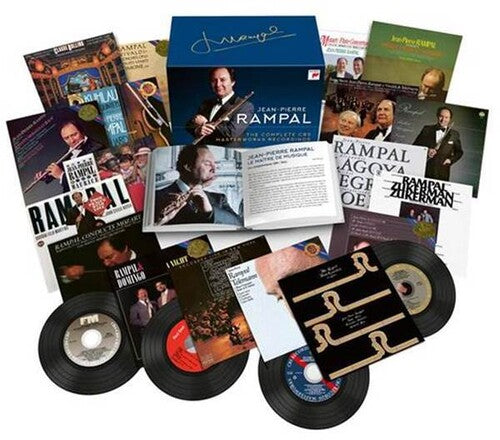
Jean-Pierre Rampal – The Complete CBS Masterworks Recordings
Before Jean-Pierre Rampal appeared on the music scene in the 1950s, wind players were rarely hired as soloists with orchestras. This legendary French flute virtuoso broke through that barrier with his astonishing talent, flair, and commanding stage presence, attaining the kind of visibility previously enjoyed only by pianists and violinists. He regularly filled the world’s largest concert halls for his recitals and chamber performances. Rampal was the father figure of the flute renaissance in the 20th century which restored the instrument to the exalted position it held during the 18th century.
He also became one the world’s most recorded artists, commanding all the essential repertoire of his instrument but equally embracing previously unknown works, his own discoveries, jazz, pop, folk and contemporary works. Virtually anything written for the flute or plausibly adapted for it was grist for his mill. In his autobiography Rampal referred to the discography that brought him numerous prizes and awards as being so enormous that not even he could keep track of it. In 1969, he began recording for CBS, and in 1979 he signed an exclusive contract with the label.
To mark his 100th birthday, Sony Classical released in a 56-CD box set the first complete edition of Jean-Pierre Rampal’s recordings for CBS, RCA, and Sony Classical.
SET CONTENTS:
DISC 1: Mozart: Flute Quartets
DISC 2: Bach Family
DISC 3: Bolling: Suite for Flute and Jazz Piano
DISC 4/5: Rampal and Lagoya in Concert
DISC 6: Vivaldi/Telemann
DISC 7: Bolling: "Picnic Suite"
DISC 8: Mozart: Flute Quartets K. 285 & K. 298/Divertimento K. 334
DISC 9: Carnaval de Rampal (Showpieces)
DISC 10: Schubert: Sonata In A Minor/Moscheles: Sonata concertante
DISC 11: Pastorales De Noel
DISC 12: Dvořák, Feld, Martinů: From Prague With Love
DISC 13: Japanese Melodies, Vol. III
DISC 14: Haydn: Divertimentos
DISC 15: Sonatas of J.S. Bach and sons
DISC 16: Jean-Pierre Rampal plays Scott Joplin
DISC 17: Weber: Sonatas for Violin and Piano
DISC 18: Bach: Concerto for Flute, Strings and Basso Continuo
DISC 19: Vivaldi: Six Concertos for Flute
DISC 20: Fascinatin' Rampal: Jean-Pierre Rampal plays Gershwin
DISC 21/22: Bach: Sonatas and Partita for Flute
DISC 23/24: Haydn: Concertos
DISC 25: The Flute at The Court of Frederick The Great
DISC 26: Night at The Opera: The Magic Flute
DISC 27: Chants de Noel / Children’s Songs
DISC 28: Mozart: Sonatas
DISC 29: Bolling: Suite No. 2 For Flute and Jazz Piano Trio
DISC 30: Mozart: The Flute Quartets
DISC 31: Telemann: Overture/Concertos
DISC 32: Telemann, Kuhlau, Bach, Mozart, Doppler
DISC 33: Kuhlau: Flute Quintets
DISC 34: Mozart: Concerto for Flute and Harp/Sinfonia concertante
DISC 35: Carulli: Flute Concerto and more
DISC 36: Concertos for Two Flutes
DISC 37/38: C.P.E. Bach: The Complete Flute Concertos
DISC 39: Mozart: Flute Concertos
DISC 40: Music for Flute and Harp
DISC 41: Mozart,Telemann, J.C. Bach, Reicha
DISC 42: Vivaldi: 6 Double Concertos
DISC 43: Rameau: Pièces de clavecin en Concerts
DISC 44: Italian Flute Concertos
DISC 45: Mozart: Divertimento, K.334/Adagio And Rondo, K.617/Andante, K.616/Quintet, K.557
DISC 46: Haydn: London Trios
DISC 47: Vivaldi: The Four Seasons
DISC 48: Kathleen Battle and Jean-Pierre Rampal in Concert
DISC 49: Pla: Catalan Flute Music of the 18th Century
DISC 50: Boccherini: Flute Quintets
DISC 51: Collaborations
DISC 52: Mozart: Symphonies Nos. 36 & 38 – Jean Pierre Rampal, conductor
DISC 53: Carulli/Haydn: Guitar Concertos – Jean Pierre Rampal, conductor
DISC 54: Bolling: Suite for Chamber Orchestra and Jazz Piano Trio – J.P. Rampal, conductor
DISC 55: Romantic Harp Concertos – J.P. Rampal, conductor
DISC 56: Mozart: March/Serenade K. 250 “Haffner” – J.P. Rampal, conductor
REVIEW:
Flautist Jean-Pierre Rampal brought the instrument to new prominence, proving its enormous potential in a wide range of repertoire. Sony’s new collection, ‘The Complete CBS Masterworks Recordings’, opens to a benchmark 1969 recording of the Mozart flute quartets where Rampal joins forces with Isaac Stern, Alexander Schneider, and Leonard Rose, and ends with more Mozart – and more Stern – for a keenly played 1994 version of Mozart’s Haffner Serenade. Especially noteworthy are three Kuhlau flute quintets where Rampal joins forces with the Juilliard Quartet: this is superior music, beautifully performed and recorded.
Contemporary repertoire is represented in the first instance by a colorfully inventive and well-performed Penderecki Concerto under the composer’s own direction, surely the best ‘modern’ piece in the set. Rampal enjoyed a fruitful musical relationship with the French jazz pianist, composer and arranger Claude Bolling. Of those pieces included in the set, I’d gravitate first to the Suite for chamber orchestra and jazz piano trio, with its classical resonances; on the other hand, programs devoted to Scott Joplin rags and Gershwin (including a musically pointless abbreviation of An American in Paris) are best left in the box. I’m all for creative crossover but the Gershwin in particular misfires, musically. Still, to be landed with just two ‘duffs’ in a collection of 56 CDs is pretty good going.
As you can imagine, some of the featured repertoire appears more than once but there are sufficient differences in approach between alternative recordings to justify spending time comparing. What’s most interesting is the typically wide range of music on offer, some of it of exceptional quality.
Overall, this is a most enjoyable set, sturdily boxed, with original jacket sleeves that include readable spines, and a hardcover 220-page accompanying book that will give you informative annotations and all the discographical information you need. As diverting collections go, this is certainly one to consider.
-- Gramophone (Rob Cowan)
Byrd: My Ladye Nevells Booke / Pieter-Jan Belder
The only complete available recording of a landmark in Elizabethan keyboard music. With a huge catalogue of Brilliant Classics recordings to his credit, Pieter-Jan Belder has won particular praise for his ambitious project to record the complete Fitzwilliam Virginal Book), a treasury of English keyboard music from the late Elizabethan and early Jacobean era. Now he focuses his attention on the greatest English composer of that age, with a volume dedicated to William Byrd, and to his largest single collection of music for the keyboard.
My Ladye Nevells Booke embraces the most popular genres of its day. Its contents are typical fare for English Renaissance composers: dances, variation sets, marches, contrapuntal fantasies and programmatic pieces, and the repertory comes from a period beginning in the mid 1560s. Byrd makes each of these genres his own with consummate ingenuity; the variety and the beauty of the collection as a whole rewards players and listeners alike. The CD booklet contains an extensive essay on My Ladye Nevells Booke by Jon Baxendale, who is co-editor of the latest edition of the score.
David Zinman Conducts Strauss / Zinman, Tonhalle-Orchester Zürich
David Zinman, one of today’s most versatile and enterprising conductors, renowned for his interpretations of Beethoven and the music of his American compatriots, has recorded the major works of Richard Strauss with his venerable Swiss orchestra. These excellent performances are reissued here in a single box. ClassicsToday: “There’s much to savor over the course of these seven discs … Zinman’s clear-headed, intelligent interpretations are well worth getting to know.” MusicWeb International: “Zinman has the measure of the scope and scale” of Strauss’s music. “Throughout the project there is no question that the Zurich Tonhalle Orchestra play particularly well, while the Arte Nova engineers have produced an atmospheric acoustic and a suitably opulent sound quality … Undoubtedly a major collection.”
REVIEW:
As a Strauss conductor, David Zinman's interests lie more with making sense of the composer's complex linear strands than reveling in his dazzling sonorities and dynamic extremes. In other words, Zinman's a line guy, while Straussians like Kempe and Karajan are chord guys (Strauss is a chord guy disguised as a line guy). There's much to savor over the course of these seven discs.
Zinman's Alpine Symphony mirrors the rounded elegance of Karajan's early digital DG recording, but with more accomplished first-desk playing and better-balanced sonics. He also surpasses the venerable Böhm traversal of the garish Festival Prelude (perhaps the worst orchestral composition by a major composer). Zinman leads a disciplined Sinfonia Domestica that proves more genial and less regimented than Szell/Cleveland, even if we've long been spoiled by Neeme Järvi's stunning brass section. Although Zinman's Metamorphosen doesn't match Karajan's uniform tonal beauty or Kempe's surging climaxes, he takes uncommon care to place the solo and ensemble lines in proper perspective.
All of the works with soloists are played well, especially Simon Fuchs' supple, rich-toned traversal of the Oboe Concerto and Roland Pöntinen's incisive, frighteningly assured left-hand work in the Parergon. While Kempe/Dresden reigns as the Strauss collection of reference, Zinman's clear-headed, intelligent interpretations are well worth getting to know.
--Jed Distler, ClassicsToday.com (reviewing a previous release of this music on Arte Nova)
Kodály: Háry János Suite; Symphony in C / Falletta, Buffalo Philharmonic
Zoltán Kodály’s orchestral output is relatively small but brimming with Hungarian spirit. JoAnn Falletta and the Buffalo Philharmonic (BPO) present one of the composer’s most popular works, the Háry János Suite, alongside Summer Evening and the Symphony in C major. Falletta and the BPO’s acclaimed previous Kodály album is on 8573838.
REVIEW:
This is JoAnn Falletta’s second recording for Naxos of music by Kodály and it is every bit as fine as that earlier one. It includes two works which deserve greater exposure than they have received. It also contains Kodály’s most popular orchestral piece, the Háry János Suite. There have been plenty of excellent accounts of this suite, particularly by such Hungarian conductors as István Kertész and Iván Fischer. Falletta holds her own against those, even if none I have heard surpasses Kertész in this music, including his 1964 recorded sound.
The primary reason to get this CD is the rarely performed Symphony in C, a piece that Kodály worked on over a long period beginning in the 1930s and completing only in 1957. It is an attractive and well-orchestrated work with memorable themes and characteristic of Kodály in its harmony and rhythms.
There is plenty of detail to be savoured and at the same time good, but not excessive reverberation. Another fine production from Naxos.
-- MusicWeb International
The Naxos Music Group 2023 Catalogue [Book + Sampler CD]
Naxos was founded in 1987 and has developed from being known primarily as a budget label focusing on standard repertoire into a virtual encyclopaedia of classical music with a catalogue of unparalleled depth and breadth. Innovative strategies for recording exciting new repertoire with exceptional talent have enabled the Naxos label to develop one of the largest and fastest-growing catalogues of unduplicated repertoire. Over 10,000 titles are currently available at affordable prices, recorded in state-of-the-art sound, both in hard format and on digital platforms. Naxos works with artists of the highest calibre and its recordings have been recognised with numerous international honours, including GRAMMY, ICMA, Opus Klassik and Gramophone Editor’s Choice Awards.
The company has also transformed into a global music group that owns, administers and/or distributes a large number of other independent record labels. Some of these labels are listed in this catalogue.
The sheer size of the 2023 catalogue requires it to be divided into three sections for convenient reading. Part 1 includes the Naxos label only, while Part 2 and Part 3 have the catalogues of the affiliated labels in the Naxos Music Group.
The sampler CD includes recordings from the Naxos main label as well as many of the group's global family of affiliates, with performances by Leonard Slatkin, Boris Giltburg, JoAnn Falletta, Christian Tetzlaff, Lars Vogt, Daniel Müller-Schott, Walter Klien, and more.
Marrow - The Bach Cello Suites / Thorsteinsdóttir
There is an Icelandic saying, “mergur málsins”, which directly translates to “the marrow of the matter,” and these Suites, to me, speak directly to the essence of being human. As for many cellists, these Suites have been my steady companion throughout my life with the cello, first as a vehicle to learn counterpoint, style, and harmony, then as material with which to explore personal expression and interpretation, and today they are a mirror, reflecting the deeper truth of the human experience, revealing more layers of meaning each time I come back to them.
As far as we know, these Suites were not written for the church, and by 1720, they were not written for people to actually dance to, but rather as forms with familiar rhythms and style. In contrast to the Violin Sonatas and Partitas which were written around the same time, the Cello Suites each have the same movement structure, which includes a Prelude and two pairs of dances (Allemande and Courante, Sarabande and Gigue) with an added “wildcard” of pairs of Menuets, Gavottes, or Bourées. Rather than hindering expression, this structure seems to enable more creativity to flow, as Bach pushes the boundaries of the expressive and technical possibilities of the instrument with each succeeding Suite.
During the heart of the pandemic of 2020, I found comfort and refuge in these Suites. As I began to play them not just individually but as a set, an arch started to emerge, a true Hero’s journey: starting with the innocent 1st Suite in G major, the first taste of bitter disappointment in the d minor 2nd Suite, a renewed optimism in the 3rd Suite in C major, the bold and brash 4th Suite in Eb Major, the dark tragedy of the 5th Suite in C minor, and finally the glorious redemption of the 6th Suite in D Major. My hope in presenting these Suites without repeats is to more clearly illuminate this arch of their presented order so that we may more closely follow this universal storyline. - Sæunn Thorsteinsdóttir
REVIEW:
Recordings of Bach’s six Cello Suites aren’t in short supply, so what does this latest new one have going for it? Icelandic-American cellist Sæunn Thorsteinsdóttir is known as a contemporary music specialist, returning here to what she describes as “mergur málsins” (“the marrow of the matter” in Icelandic), a constant companion throughout her musical life. Thorsteinsdóttir found solace in the suites during the pandemic and celebrated the 2020 summer solstice by playing each suite in a different church in Iceland’s remote Westfjords region. Thorsteinsdóttir views each work as part of a sequence, “a true hero’s journey” which takes the listener from innocence to redemption, tasting disappointment, optimism and tragedy along the way.
Knowing this isn’t a prerequisite for enjoying the performances, and Thorsteinsdóttir’s poised, lyrical playing makes this set a front runner among recent recordings.
-- The Arts Desk
An Elizabethan Christmas / Fretwork
Viol consort Fretwork and mezzo soprano Helen Charlston explore the more reflective and sombre Christmas celebrations of Elizabethan England, in a collection of works by William Byrd, Anthony Holborne, Orlando Gibbons and Martin Peerson. With celebrations confined strictly to the 12 days from Christmas Eve to Epiphany, the preceding Advent was regarded as a time of religious introspection, with music composed to mark both fasting and feasting. Byrd’s consort songs for voice and 5 viols encompass this range, from the joyous Out of the Orient Crystal Skies – ending with an exuberant ‘Falantidingdido’, a word whose meaning is lost to history – to his Lullaby, a ‘song of sadnes and pietie’ that became one of Byrd’s most enduringly famous songs.
In 2021, Fretwork celebrates its 35th anniversary. In the past three and a half decades they have explored the core repertory of great English consort music, from Taverner to Purcell, and made classic recordings against which others are judged. In addition to this, Fretwork have become known as pioneers of contemporary music for viols, having commissioned over 40 new works. Acclaimed for her musical interpretation, presence and “warmly distinctive tone” (The Telegraph), Helen Charlston is quickly cementing herself as a key performer in the next generation of British singers. Helen won first prize in the 2018 Handel Singing Competition and was a finalist in the Hurn Court Opera Competition, and the Grange Festival International Singing Competition.
Arnold: Complete Symphonies & Dances / Andrew Penny
Recorded in the presence of the composer, Andrew Penny’s survey of the Complete Symphonies and Dances by Sir Malcolm Arnold has long been considered to contain benchmark recordings. Born in 1921, Sir Malcolm Arnold quickly established himself as a fluent and versatile composer, a gifted tunesmith and a brilliant orchestrator. His music is typically lucid in texture, rich in melody and clear in draughtsmanship yet there are frequent signs of a complex musical personality and dramatic tensions not far beneath the surface. The Dances are light-hearted, vivid and jaunty, yet the nine symphonies explore the composer’s darker side, painting a picture of his private ‘journey through hell’ as he struggled with physical and mental health issues. They are masterworks which exert continued appeal and stimulate repeated listening.
REVIEW:
These are performances of uniformly high quality made in the presence of the composer and recorded with more realistic balances and cleaner textures than any of their rivals. While all of these readings are first class, highlights include a superb Symphony No. 5 and interpretations of Nos. 7 and 8 in which conductor Andrew Penny sets tempos that allow Arnold’s fanciful orchestrations to register with maximum color and impact.
– ClassicsToday.com (10/10; David Hurwitz)




 {# optional: put hover video/second image here positioned absolute; inset:0 #}
{# optional: put hover video/second image here positioned absolute; inset:0 #}


 {# optional: put hover video/second image here positioned absolute; inset:0 #}
{# optional: put hover video/second image here positioned absolute; inset:0 #}


 {# optional: put hover video/second image here positioned absolute; inset:0 #}
{# optional: put hover video/second image here positioned absolute; inset:0 #}


 {# optional: put hover video/second image here positioned absolute; inset:0 #}
{# optional: put hover video/second image here positioned absolute; inset:0 #}


 {# optional: put hover video/second image here positioned absolute; inset:0 #}
{# optional: put hover video/second image here positioned absolute; inset:0 #}


 {# optional: put hover video/second image here positioned absolute; inset:0 #}
{# optional: put hover video/second image here positioned absolute; inset:0 #}


 {# optional: put hover video/second image here positioned absolute; inset:0 #}
{# optional: put hover video/second image here positioned absolute; inset:0 #}
 {# optional: put hover video/second image here positioned absolute; inset:0 #}
{# optional: put hover video/second image here positioned absolute; inset:0 #}


 {# optional: put hover video/second image here positioned absolute; inset:0 #}
{# optional: put hover video/second image here positioned absolute; inset:0 #}


 {# optional: put hover video/second image here positioned absolute; inset:0 #}
{# optional: put hover video/second image here positioned absolute; inset:0 #}


 {# optional: put hover video/second image here positioned absolute; inset:0 #}
{# optional: put hover video/second image here positioned absolute; inset:0 #}


![The Naxos Music Group 2023 Catalogue [Book + Sampler CD]](http://arkivmusic.com/cdn/shop/files/highlights.jpg?v=1766245467&width=800) {# optional: put hover video/second image here positioned absolute; inset:0 #}
{# optional: put hover video/second image here positioned absolute; inset:0 #}


 {# optional: put hover video/second image here positioned absolute; inset:0 #}
{# optional: put hover video/second image here positioned absolute; inset:0 #}


 {# optional: put hover video/second image here positioned absolute; inset:0 #}
{# optional: put hover video/second image here positioned absolute; inset:0 #}


 {# optional: put hover video/second image here positioned absolute; inset:0 #}
{# optional: put hover video/second image here positioned absolute; inset:0 #}